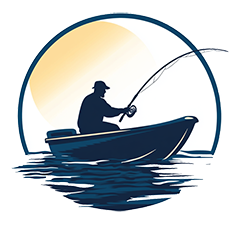Exploring the world of primitive fishing methods unveils a fascinating realm where ancient techniques meet ingenuity. From the simplicity of hand fishing to the precision of fish spear tactics, these methods offer a glimpse into the resourcefulness of our ancestors in securing sustenance from the waters. As we delve into the intricacies of these techniques, a deeper appreciation for the art of primitive fishing emerges, showcasing a timeless connection between humans and nature’s bounty. The evolution of these methods over time reveals a rich tapestry of knowledge waiting to be unravelled, offering insights that transcend mere survival skills.
Table of Contents
Hand Fishing Techniques
Hand fishing techniques, also known as noodling, encompass a variety of traditional methods for catching fish by hand in aquatic environments. From ancestral fishing practices involving the use of plant poisons to stun fish for easier collection, to modern-day lobster hunting in shallow saltwater that requires quick grabs and swatting motions, hand fishing has evolved over time. The incorporation of protective gear such as Kevlar gloves has made it safer to engage in activities where hazards like sea urchins may be present. In primitive fishing, the use of a gorge hook, like a sharp thorn, is a method where fish are enticed to swallow bait before being caught in a dip net. These techniques highlight the resourcefulness and adaptability of early fishermen, who relied on ingenuity and skill to secure their catch. As hand fishing methods have developed and diversified, they continue to offer a unique and challenging way to interact with the aquatic environment.
Primitive Gill Net Methods
The evolution of primitive fishing methods extends beyond hand fishing techniques to encompass the utilization of gill nets, a traditional tool designed to entangle fish and optimize catch yields during migratory fish runs. Gill nets, consisting of netting that hangs vertically in the water with meshes sized to entangle fish, offer an efficient and passive fishing method. By strategically placing these nets to intercept fish swimming through specific routes, fishermen can target particular species during their migration. This specific fish targeting is a key advantage of gill nets, allowing for a more controlled and deliberate catch. Whether in rivers, lakes, or coastal waters, gill nets serve as versatile tools for fishermen to employ in different water bodies with varying fish populations. The use of gill nets represents a significant advancement in primitive fishing practices, enabling a more systematic and efficient approach to catching fish during their seasonal movements.
Dip Net Fishing Strategies
Dip net fishing, a method as old as time, offers a straightforward yet effective way to scoop up the bounty of the water. Its simplicity and versatility make it a valuable tool for fishermen seeking to efficiently catch fish. Throughout history, dip nets have proved to be a reliable and traditional choice for harvesting fish from various water bodies.
Netting Water’s Bounty
Netting Water’s Bounty reveals a time-honored strategy for harvesting fish that combines efficiency with simplicity. Dip net fishing, a traditional technique used for centuries, is highly effective in rivers, lakes, and streams. This method is versatile, making it ideal for various fish species and different water environments. The dip net’s simple design allows for easy retrieval of fish, enhancing the overall fishing experience. It serves as a valuable tool for catching unsuspecting fish and can be used independently or in conjunction with other fishing methods like hook and line. Dip net fishing offers anglers a sense of freedom and connection to nature, as they skillfully scoop up their catch from the water with precision and ease.
Efficient Dip Techniques
Employing a deft and resourceful approach, ancient civilizations honed dip net fishing strategies to secure sustenance from aquatic ecosystems efficiently. Dip net fishing, a traditional method, provides a reliable food source by capturing fish swiftly and effectively. This technique complements hook and line fishing, offering a simple yet powerful tool to catch various fish species. Dip nets excel in survival fishing techniques, allowing individuals to harvest fish from water bodies with ease. Their versatility makes them ideal for capturing unsuspecting fish, contributing to the success of primitive fishing methods. When combined with other traditional fishing techniques, dip net fishing emerges as a valuable asset in securing sustenance from natural resources.
Fish Spear Tactics
Fish spears have long been recognized as an effective and essential tool for capturing fish in environments characterized by clear water and dense bank cover. When it comes to primitive fishing methods, fish spears stand out as a reliable means of catching fish, especially carp and catfish in ponds and slow rivers. To successfully use fish spears, one must exhibit skill and patience as these tools require precision and timing. The art of fish spearing involves aiming below the fish to counter the refraction caused by the water, increasing the chances of a successful catch. In survival situations, mastering fish spear tactics can be crucial for obtaining food. By piercing through fish scales with primitive fish spear tactics, individuals can secure a valuable food source. The history of fish spears dates back centuries, proving their significance in the realm of survival fishing.
Fish Poison Applications
In the realm of survival fishing techniques, the application of fish poison stands out as a controversial yet historically significant method for incapacitating fish in order to facilitate their collection. Fish poison involves using plant materials to stun or kill fish, with crushed mullein seeds being known to release compounds that can immobilize fish in still water or small pools. While an ancestral method, fish poisoning is now illegal in many areas due to environmental concerns surrounding its impact on aquatic ecosystems. However, in dire survival situations where food procurement is essential, fish poison may be a necessary tool. Care must be taken when using fish poison to avoid contaminating the environment and to ensure the safe consumption of fish caught through this method. Balancing the need for sustenance with the preservation of natural habitats remains a critical consideration when resorting to fish poisoning as a means of securing food in the wild.
Hand Line Fishing Tricks
While fish poisoning has been a contentious method for capturing fish, hand line fishing presents a practical and versatile alternative in the realm of primitive fishing techniques. Hand line fishing involves using a basic setup of a hook and line, with handheld coils of line cast and retrieved manually. This method is effective for catching various fish species in different water environments, making it a valuable skill in survival situations. Bait is essential to attract fish when hand line fishing, and the simplicity of this approach allows it to be used in rivers, ponds, and other bodies of water where traditional fishing gear may not be available. The versatility of hand line fishing lies in its adaptability to different conditions and its independence from complex equipment, making it a reliable method for those seeking freedom in their fishing endeavors. With practice, individuals can hone their hand line fishing skills and increase their success in catching fish using this straightforward yet efficient technique.
Basket Trap Methodology
Basket traps, with their ingenious funnel-shaped entrances, have been a staple in ancient fishing practices across various cultures. The methodology behind constructing these traps involves intricate considerations of fish size and behavior to maximize catch rates. From wooden slat traps to minnow traps, the evolution of basket trap designs reflects a deep understanding of different fish species’ preferences and behaviors.
Trap Construction
Utilizing locally sourced materials and traditional craftsmanship, indigenous communities have perfected the art of constructing intricate traps to capture a variety of aquatic species, with basket traps standing out as a versatile and efficient method of fishing. Basket traps are effective tools for catching fish, crabs, and lobsters due to their design and functionality. These traps, often made from natural materials, are widely used globally, tailored to suit the specific fish species and water body conditions. The baited traps are particularly adept at attracting bottom feeders like catfish, ensuring a successful catch. Whether employed in modern or primitive fishing methods, basket traps remain a timeless and reliable technique for capturing aquatic life efficiently.
Baiting Techniques
In the realm of primitive fishing methods, the strategic deployment of baiting techniques within the methodology of basket traps showcases an artful approach to enticing and capturing aquatic species. These fishing traps utilize a funnel-shaped entrance to attract fish, with trap size and design customized to suit the behavior of the targeted species, making them particularly effective for catching bottom feeders like catfish. Various trap designs, including wooden slat traps and minnow traps, cater to the specific requirements of different fish species. Moreover, fish weir constructions can integrate basket traps to augment trapping efficiency, enhancing the overall success of capturing fish. This historical practice of using baiting techniques in basket traps highlights the ingenuity and adaptability of ancient fishing methods in securing a successful catch.

